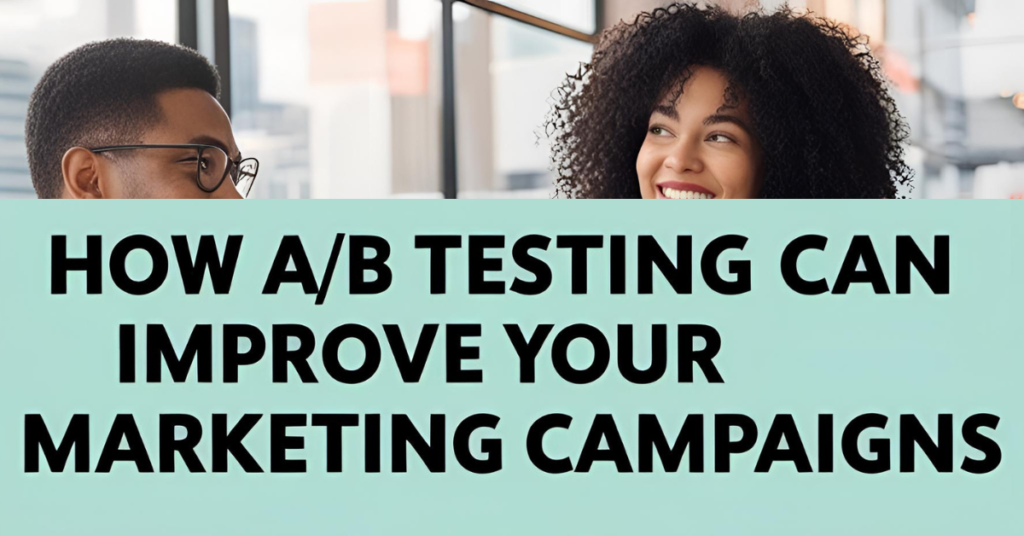Optimizing campaigns for better performance is crucial. Even if a campaign is performing well, there is always room for improvement. But how do you determine which changes will lead to better results? The answer lies in A/B testing, a powerful strategy that helps marketers make data-driven decisions.
What Is A/B Testing in Marketing?
A/B testing, also known as split testing, is a method of comparing two versions of a marketing asset—such as an ad, landing page, email, or call-to-action (CTA)—to see which one performs better. By altering just one variable at a time and analyzing the results, marketers can refine their campaigns for optimal performance.
For example, if you’re testing a landing page, you might change the CTA button’s color in one version and leave it unchanged in the other. By tracking user engagement and conversion rates, you can determine which version yields better results and implement that change.
Looking for A Step-by-Step Guide to Optimizing Keywords for SEO.
Why Is A/B Testing Important?
- Data-Driven Decision Making – A/B testing eliminates guesswork, providing concrete data on what works best for your target audience.
- Improved Conversion Rates – By continuously testing and refining different elements, you can enhance user engagement and increase conversion rates.
- Enhanced User Experience – Testing different aspects of your website or marketing content ensures that your audience receives the most effective and engaging experience.
- Cost Efficiency – Rather than spending more on ads, A/B testing helps you maximize the value of your current traffic and marketing budget.
When to Use A/B Testing
A/B testing can be used in various digital marketing areas, including:
- Website Optimization – Testing different headlines, layouts, and CTA placements on web pages.
- Email Marketing – Comparing subject lines, content structure, or CTA buttons in email campaigns.
- Social Media Ads – Experimenting with different images, copy, and targeting strategies.
- E-commerce Strategies – Testing product descriptions, pricing strategies, and promotional offers.
Steps to Conduct an A/B Test
- Identify What to Test – Choose an element that could impact performance, such as a CTA, headline, or layout.
- Create Two Variations – Develop two versions—Version A (the control) and Version B (the variation).
- Define Success Metrics – Decide on the key performance indicators (KPIs) you’ll measure, such as conversion rate, click-through rate, or engagement.
- Run the Test – Ensure that both versions run simultaneously for accurate comparison.
- Analyze the Results – Use analytics tools to compare performance and determine the winner.
- Implement the Best Version – Apply the winning element to your campaign and continue optimizing over time.
Best Practices for A/B Testing
- Test One Element at a Time – Changing multiple elements can make it difficult to determine which one influenced the outcome.
- Use a Large Sample Size – Ensure that your test reaches enough users for statistically significant results.
- Run Tests for an Appropriate Duration – Ending a test too soon can lead to unreliable conclusions.
- Continuously Experiment – Trends and user behavior change over time, so ongoing testing is essential.
Conclusion
A/B testing is a powerful technique for improving marketing campaigns by identifying what truly resonates with your audience. By making data-driven adjustments, you can enhance user engagement, boost conversions, and maximize your return on investment. Whether you’re optimizing website elements, social media ads, or email campaigns, A/B testing should be a key part of your marketing strategy.
By implementing A/B testing, businesses can make informed decisions and continuously improve their marketing efforts for long-term success.
Frequently Asked Questions (FAQs)
How long should an A/B test run?
The duration depends on the traffic volume and sample size. Typically, an A/B test should run for at least one to two weeks to collect meaningful data.
Can I test multiple elements at once?
It’s best to test one element at a time to ensure clear results. If you need to test multiple elements, consider multivariate testing instead.
How do I know if my A/B test is statistically significant?
Statistical significance is determined using tools like Google Optimize or A/B testing calculators. A confidence level of 95% or higher is generally considered reliable.
What happens if my A/B test results are inconclusive?
If the results don’t show a clear winner, re-evaluate your hypothesis, test a different element, or run the test for a longer period.
Is A/B testing only for websites?
No, A/B testing can be applied to email marketing, social media ads, landing pages, and even offline marketing materials to enhance campaign performance.
